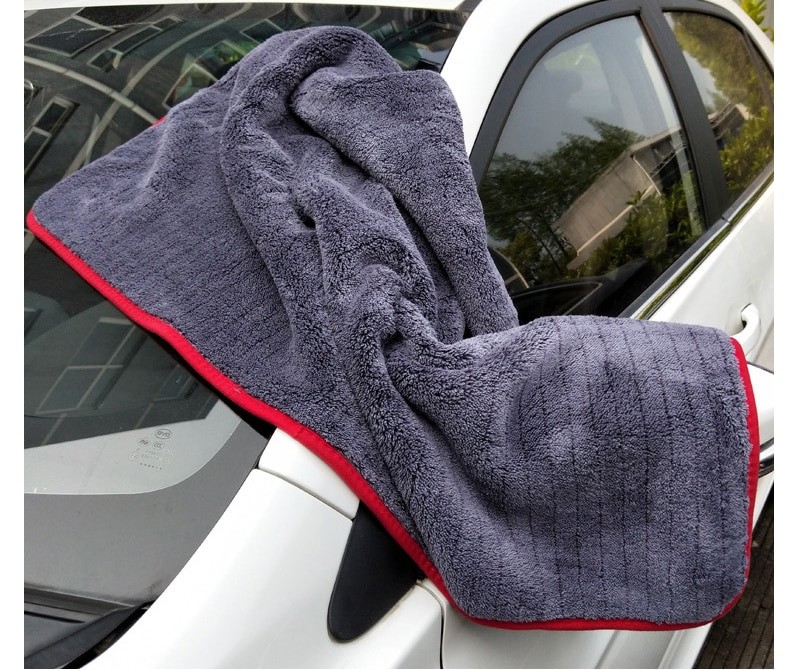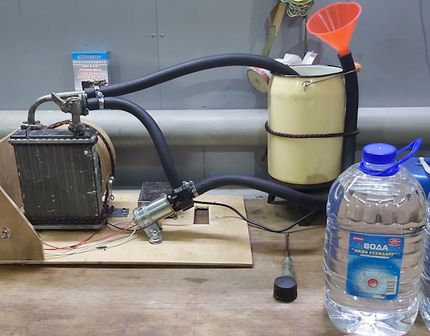
How to clean your car with a microfiber cloth
Content
Keeping a car clean can take a lot of time and money. Lines at automatic car washes are long during peak hours, which means you can queue for an hour or more just to get your car washed. Touchless car washes don't clean your car very well, so the money you pay to wash your car doesn't produce the quality results you want.
You can wash your car yourself in the same time as an automatic car wash. If you use high quality materials it might cost a bit more at first, but after a few uses it will pay off.
Microfiber cloths are relatively new to the market for home use and have already proven to be a great investment when it comes to cleaning and dusting around the house, in the garage, and cleaning the car inside and out.
So what makes microfiber so effective?
Microfiber cloths are a synthetic material made up of tiny threads. Each strand is about 1% the diameter of a human hair and can be tightly woven to create an ultra-absorbent material. The strands are made from fibers such as nylon, kevlar and polyester and are extremely strong and durable, making them ideal for automotive use. They trap and draw dirt and dust into their fibers, unlike many other natural and synthetic fabrics that smear dust and dirt across the surface.
Part 1 of 4: Prepare your car
Necessary materials
- Bucket
- Soap for car wash
- Microfiber cloths
- Water source
Step 1. Choose a place to wash your car. You need access to a plentiful source of water to wet your car, wash it, and rinse it when you're done.
If possible, find a shady spot. Direct sunlight can dry car wash soap on paint before you can rinse it off.
If there are no shady spots available, wash small areas of the car at a time to prevent drying problems.
Step 2: Raise the wiper arms. To clean windows thoroughly, raise the wiper arms so you can access all parts of the windshield.
Step 3: Prepare laundry detergent. Fill the bucket with water, preferably warm water, but cold water will suffice.
Add car wash soap according to the instructions on the soap container.
Stir to make the water soapy.
Dampen a microfiber cloth in a bucket of water as you continue cooking.
Step 4: Rinse the outside with water to remove loose dirt.. Apply water to the entire machine, including all windows and wheels, paying special attention to dirt accumulation areas.
Part 2 of 4: Wash your car with a microfiber cloth
Step 1: Wipe down each panel with a soapy microfiber cloth.. Start at the top of the car and work your way down.
If there are particularly dirty panels, save them for last.
Step 2: Completely rinse one panel at a time. If you're parked in direct sunlight or it's hot outside, wash small areas at a time to keep the soap from drying to the paint.
Step 3: Use an open palm to increase the surface area. Use a wide, open hand in the fabric to cover as much surface area as possible in the shortest amount of time.
The dirt will be absorbed into the fibers of the microfiber cloth, and not just smeared on the surface.
Clean the wiper blades and arms with a cloth. Don't give up just yet.
Step 4: Rinse Your Microfiber Cloth Regularly. Whenever you wipe a heavily soiled area, rinse the rag in soapy water.
Remove any rough particles that you can feel from the fabric before proceeding.
If your car is very dirty, you may need more than one rag to complete the job.
Step 5: Wash your wheels last. Dirt, soot and brake dust can build up on your wheels. Wash them last to avoid contaminating the wash water with abrasive dirt that will scratch the paint.
Step 6: Rinse the vehicle thoroughly with clean water.. Using a hose or bucket of clean water, wash the vehicle from top to bottom.
Start at the roof and windows, rinsing until no more foam appears in the rinse water.
Rinse each panel thoroughly. Soap residue may leave marks or streaks on the paint when it dries.
Part 3 of 4: Wipe down your car with a microfiber cloth
Step 1: Wipe all exterior parts of the car with a clean microfiber cloth.. Wet the cloth thoroughly with clean water and wring it out as best you can. This is how microfiber cloths are most absorbent.
Wipe each panel and window individually, starting at the top.
Step 2: Keep the fabric open. Keep the rag as open as possible while wiping, using your open hand to cover as much of the surface as possible.
Step 3: Wring out the fabric whenever it gets wet. Just like suede, the fabric will be almost dry after you wring it out and have the best absorbency.
Step 4: Rinse the fabric if it gets dirty. If the fabric becomes soiled due to residual dirt, rinse it thoroughly with clean water.
Do not use soapy water on this fabric or you will get streaks on the machine when it dries.
Move down the car, saving the bottom panels and wheels for last.
Step 5: Replace the cloth with a clean one if it gets dirty..
Step 6: Wipe again or let air dry. When you finish wiping down each panel, there will be a thin film of water on it. You can let it dissipate or dry on its own, although it's best to wipe it again with a clean, dry microfiber cloth.
Wipe down each panel with a dry cloth that picks up the last remaining water, leaving the surface streak-free and shiny.
You may need a few microfiber cloths to dry your car. Do not continue the final stage of drying with a cloth soaked in fabric, otherwise streaks will appear.
Part 4 of 4: Spraying onto the cleaning agent (method without water)
Necessary materials
- Microfiber cloths
- Waterless car wash kit
Step 1: Spray the cleaning solution on a small area of the car..
Step 2: Wipe off the solution. Wipe in two ways - from side to side and up and down. This way you will collect the most amount of grease and dirt.
Step 3: Repeat the process around the car. Do steps 1 and 2 all over the car and soon you will have a shiny new ride.
For those who live in drought-hit states, it's hard to imagine that you'll ever be able to wash your car again. Some cities have taken drastic measures to conserve water and have banned car washes in driveways to save water.
Waterless washing or using microfiber cloths to reduce water consumption are some of the most environmentally friendly methods of car cleaning. A number of automotive supply companies sell bottled cleaning solutions that can clean your car without the use of water, and often the results are just as good.

